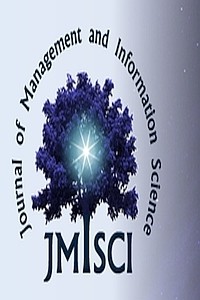Leadership and Mission Command in Future Operational Environment
Leadership and Mission Command in Future Operational Environment
___
- Army, U.S. (2012). Army Doctrine Reference Publication (ADRP) 6-0: Mission Command.
- Army, U.S. (2013). Army Mission Command Strategy. http://usacac.army.mil/cac2/MCCOE.
- Aybar C. (2015). An Assessment of Army Leadership and Senior Officer Competencies.
- Bingül, E. (2015). A Leadership Approach in the Perspective of Mission Command: Subordinate-Oriented Approach.
- Eryılmaz, Ö. (2015). Fighting in Mega Cities: A Proposed Model for Companies to Implement Mission Command.
- Hayran, A. & Karaman, E. (2015). On the Way to Achieving and Realizing Mission Command: Encouraging Leaders for Accepting Prudent Risk Through the Lens of Prospect Theory.
- Özdemir, H. & Alp, Ö.F. (2015). Developing Transformational Leaders by Mission Command for the Future Security Environment.
- Sığrı, Ü. (2015). Assessment of Military Leadership in a Peace Operation: The EUFOR Case and its Capacity Building Role.
- Şimşek, M. (2015). Leadership in Future Operational Environment.
- Tayanç, N.K., Ünal, G.T., Baltacıoğlu, G. & Tuna, S. (2015). Coping with the Complicated Security Challenge: Trust and Shared Understanding for Effective Communication.
- Uygun, M.S. (2015). Servant Leadership in Mission Command: Devoted Command.
- Yalçınkaya, H. (2015). Leadership and Mission Command in COIN Operations.
- -
- Yanlçınkaya, H., Hayran, A. & Uygun, M.S. (2015). Challenges for Effective Application of Leadership and Mission Command in Today's and Future Security
- Başlangıç: 2013
- Yayıncı: Kerim GÖZTEPE
Creativity for the Leaders of Future
Strategy Development for Future Security Environment
How to Make Social Media More Effective as an Exploitation Area
Leadership and Mission Command in Future Operational Environment
Celil Aybar, Gökhan Baltacıoğlu, Süleyman Özkaynakçı
Transforming an Army:The Trap of Culture, Politics, Technology,and the Economy
Should We Rely on Intelligence Cycle?
Bahadir Aydın, Zafer Ozleblebici
The Role of Social Marketing in Creating Obesity Awareness and Its Effects on Life Quality
Mustafa Karadeniz, Güzide Eroğlu Pektaş, Mustafa Gözüyukarı
